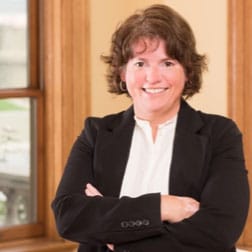By Melanie Priest, senior consultant, Hedges
Like the proverb: “It takes a village to raise a child,” it also takes a village to develop competitive grant proposals. The more resources and team members you include when creating grant proposals, the more you will be able to paint a compelling picture of your organization and the project in which you are seeking funding.
With the increasingly competitive nature of foundation grants, best practices suggest including staff, participants, volunteers, community partners, and funders within your organization’s “village” to develop strong proposals. There are more than a million charitable organizations registered with the Internal Revenue Service in the United States (National Center for Charitable Statistics, 2019). Just like fundraising focused on individual donors, it is a competitive world when trying to secure foundation grants.
Your grant proposal may be developed by the best writer around, however it will fall short without preparation, planning, and input from all perspectives of the organization. It is essential to identify and utilize all contributors that comprise your village to set you up for optimal success.
Before creating the most competitive proposal, it is necessary to build your village by getting to know who the funders are in the area.
Find your funder community
Learning about who provides grants in your community is the first step in the grants process. Researching, identifying prospects, and cultivating relationships are key components needed when getting to know the local, regional, and national funding landscapes.
- Research: There are various databases available to search for funding prospects. At Hedges, we have found that the Foundation Center’s online directory, https://fconline.foundationcenter.org/, is a robust and comprehensive tool providing information about grant funders through keyword and name searches. The directory is available through a paid subscription or for free at the Indianapolis Public Library’s Central Library.
Additional free resources to conduct your searches include: the IRS informational tax return (also known as the 990) available on guidestar.org, topical list serves, Google searches, foundation websites and newsletters. Of course, word of mouth is also a valuable resource so asking your board of directors, community partners, volunteers, and staff to keep their eyes and ears open for grant opportunities is good practice.
- Identifying prospects: Once you have identified potential grantors, you will need to narrow your list to only those that are the best match for your organization. Things to consider when identifying prospects include: the focus or purpose areas in which the funder has an interest; similar grants funded, range of grant awards amounts; geographic requirements. Linkages to executive and volunteer leadership are also important.
Thorough research to determine a match with each prospect is imperative. Determining the priorities and interest areas of each foundation is important down to the keywords used. Even the difference between a food pantry and a food bank is notable as is the differences in college readiness and college-success programs. Without a strong match, there is less of a likelihood that your proposal will be funded.
- Cultivating relationships: Similar to relationship building with your individual donors, cultivating relationships with foundation staff and board members is critical. This is particularly true with local foundations. Many foundations in Central Indiana encourage or require an in-person meeting, phone call, or other means of communication to share project ideas before an application can be submitted. When in doubt, take every opportunity to get to know funders whenever possible through invitations to coffee, onsite tours and other programming and fundraising events, and engaging funders through social media and other communications.
Another way to cultivate funder relationships is through networking. Share names of foundation leadership, with your board, staff, and volunteers to determine if anyone has connections. Our clients are often able to get a foot in the door because of board affiliations. And as the relationship is developing, do not hesitate to seek advice from potential funders about the work your organization does. Through the grants process, they have a pulse on the community and what programs are successful. With further cultivation, these relationships then can lead to deeper involvement and increased financial support for the organization over time.
Now that you have identified grant funders, it is time to develop your proposal. Here are two tips you will want to consider when using your village for the most competitive proposal:
- Share your story
Most funders want to understand why there is a need for your project and organization and how your organization measures impact. Use available data to strengthen your grant proposals by illustrating the need and the expected results.
- Community data sources: There are several online tools that provide demographics and statistics by census tract, neighborhood, city, county, region and state. SAVI is a project of The Indiana University Purdue University (IUPUI) Polis Center and is known as one of the first and largest community data-information systems in the country (www.savi.org, 2020). Additional data sources include the U.S. Census Bureau and Stats Indiana. Scholarly articles and studies on the specific issues that your organization addresses are also available through Google Scholar.
- Measuring impact: To measure impact it is best to create a logic model. The logic model serves as a roadmap for your program and organization, including what resources you need to implement the program, the activities that will take place, the frequency of the activities and number of participants, and how the activities have impacted participants. A comprehensive overview of logic models is described in the W.K. Kellogg Foundation Logic Model Development Guide.
Logic models serve as a foundation for strong impact measurement. By clearly defining the program’s short-, medium-, and long-term outcomes and associated activities, standardized evaluation tools can then be researched to ensure proper measurement of key outcomes. The data to be collected and measured can be captured through a variety of methods including surveys, focus groups, one-on-one interviews, intake forms and staff observations. A few years ago, one of our clients went through a process to develop a comprehensive research-based program logic model. As a result of the logic model and data collection, they were able to show program impact and were awarded a grant from a funder who had declined a grant proposal in the past because there wasn’t a way to show program impact.
- Prime your program experts
Tap into your organization’s program experts and make them an integral part of your grant proposal process. Their expertise and input will strengthen every component of your grant proposal. Key program experts include program and financial staff, program participants, community partners, and advocates.
- Program staff: The program staff are working on the front lines and implementing programs and services. As logic models and proposals are developed be sure to include them in planning to ensure that the project created is feasible and realistic. A logic model can also serve as a strong training tool for new staff. And remember that front line staff can share stories and accomplishments that will help you, the grant writer, make an inspiring and compelling case for support.
- Financial staff: Program and organizational budgets are another way to share your organization’s story, demonstrating how you plan to utilize the requested grant funds, and why a funder’s investment is important for program or project success. If you aren’t already, become good friends with your organization’s Chief Financial Officer, controller, bookkeeper or other staff that are responsible for the finances. Budgets and other financial statements are frequently required as attachments for grant proposals to show fiscal organizational health. Financial staff are the best resource in ensuring that the information shared with a funder is current and accurate.
- Program participants: Don’t forget about the most important members of the village – the program participants. Those receiving services know their needs best and should have the opportunity to inform how the programs are designed and how impact is measured and described. Their input can be acquired through surveys, focus groups and interviews, which should be administered regularly.
- Community partners: Funders are well-informed about nonprofit organizations in the community and want to know how you collaborate in ways that maximize your collective impact and avoid duplication of services. Consider community organizations as additional members of your village and be able to clearly articulate how you work together and what makes your organization distinctly unique from similar organizations in your field.
Rest assured that successful grant proposals are meant to be created collaboratively. In other words, it really does take a village. So, make sure to meet up with your village and create winning grant proposals that will bring more grant awards to your organization.

Melanie Priest is passionate about making Indianapolis a great place to live, having strong connections in the community and helping nonprofits share their stories of impact. For more than 20 years, Priest has worked closely with the Central Indiana philanthropic community to provide creative solutions to complex problems. As senior consultant, she has worked at Hedges since 2012 securing hundreds of grants for Indianapolis nonprofit organizations to ensure they are able to advance their missions.


